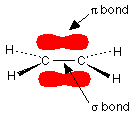Molecular orbital diagram of co
What is the bond order of CO ? Click on the CO molecular orbitals in the energy level diagram to display the shapes of the orbitals. Explore bonding orbitals in other small molecules. A molecular orbital diagram, or MO diagram, is a qualitative descriptive tool explaining chemical bonding in molecules in terms of molecular orbital theory in general and the linear combination of atomic orbitals (LCAO) molecular orbital method in particular. Now carbon monoxide’s MO diagram is: Hope it helps :) 37. A fundamental principle of these theories is that as atoms bond to form molecules, a certain number of atomic orbitals combine to form the same number of molecular orbitals, although the electrons involved may be redistributed among the orbitals.
According to molecular orbital theory individual atoms combine to form molecular orbitals as the electrons of an atom are present in various atomic orbitals and are associated with several nuclei. Controls click on the co molecular orbitals in the energy level diagram to display the shapes of the orbitals. I think I find it clear how you build it but I have some concerns about how you rationalize it. O_is well-known to be paramagnetic, and it is one of the successes of molecular orbital theory. You can see that CO is not (as it has zero unpaired electrons), but NO is (it has one unpaired electron).
Molecular Orbitals for CO. For a diatomic molecule, the atomic orbitals of one atom are shown on the left, and those of the other atom are shown on the right. Each horizontal line represents one orbital that can hold two electrons. A molecular orbital diagram or mo diagram is a qualitative descriptive tool explaining chemical bonding in molecules in terms of molecular orbital theory in general and the linear combination of atomic orbitals lcao method in particular. Use the buttons at the top of the tool to add orbitals in order of increasing energy, starting at the bottom with the.

Such a theory is the so-called ligand field theory (LFT), which has its origin in the. Technically all of the orbitals with the correct symmetry will contribute to the molecular orbitals , so it is perfectly correct to draw lines from all of them. However, as mentioned above the more significant contributions arise when the atomic orbitals are similar in energy, so lines are often drawn from these orbitals only. Other ligands have weak π-backbonding abilities, which creates a labilization effect of CO , which is described by the cis effect.
Metal–alkene and metal–alkyne complexes. As in metal–carbonyls, electrons are partially transferred from a d- orbital of the metal to antibonding molecular orbitals of the alkenes and alkynes. Where is the energy difference (Between which orbitals ) that corresponds to o (10Dq)?
Label o on the MO diagram. Fill in the MO diagram accordingly. Carbon monoxide CO consists of one carbon atom and one oxygen atom.
To view a model, click on an orbital in the energy level correlation diagram shown Mouse Control of Models. This corresponds well with the Lewis structure ( ), although the orbital approach tells us that there is one s and two p. Drawing molecular orbital diagrams is one of the trickier concepts in chemistry. The bond length is 1. Hφ1dτ = ∫φ2Hφ2dτ where H is the Hamiltonian operator.
When two (or more) atomic orbitals overlap to make a bond we can change our perspective to include all of the bonded atoms and their overlapping orbitals. Since more than one atom is involve we refer to these orbitals as molecular orbitals. MOLECULAR ORBITAL DIAGRAM KEY Draw molecular orbital diagrams for each of the following molecules or ions.
Determine whether each is paramagnetic or diamagnetic.
Comments
Post a Comment